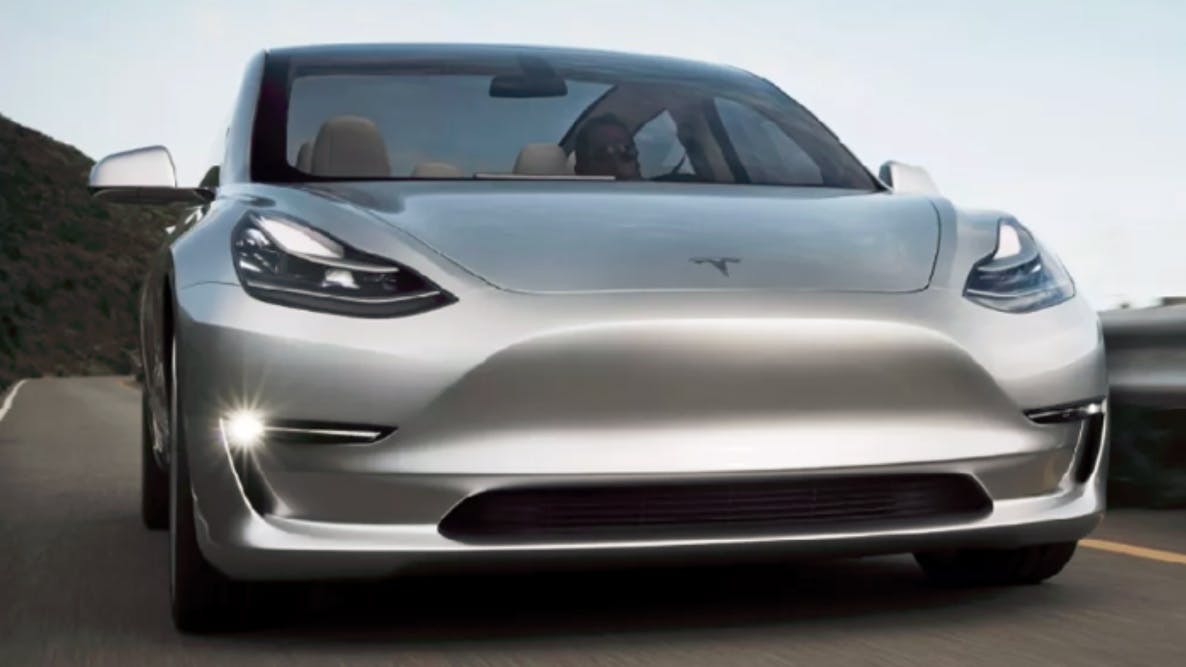Front ends, air flow, boats and aesthetics
The Tesla Model 3 has a front that upends expectations, and it's not pretty.
Front ends, air flow, boats and aesthetics
The Tesla Model 3 has a front that upends expectations, and it's not pretty.
So I promised our marketing department I’d do a blog on our recent adoption of a telemedicine benefit for our employees.
I mean it’s topical and cutting edge and cool and relevant and I’ve got some fun things I want to share. And I really intended to do that. But then, while working out of our San Francisco office, I saw my first Telsa Model 3 in the wild. And wow … I have to say ... that’s one ugly front end!
Yikes.
So first off – I am hardly a Telsa hater by any means. Rather, I stand in deep admiration and strong appreciation for their accomplishments - nothing short of amazing. Disrupting a highly inertial and deeply engrained business like the auto industry is no small feat. And let’s face it – the Tesla Model S is an absolutely gorgeous car, so it’s possible that for me the Model 3 is simply paling in comparison.
Likewise, beauty is in the eye of the beholder and automotive styling is always going to be strongly polarizing. Sometimes it’s hard to tell which quirky cars are initially going to make us blink but grow on us over time (like the Scion XB), and which quirky car’s “ugly” has real staying power (e.g. the Pontiac Aztec). Apologies to Walter White.
Car styling will always be controversial and subjective. If I felt the Telsa team had merely taken some aesthetic risk, I’d probably be more accommodating. But in this case, I have a suspicion - and it’s just a suspicion, mind you – that I know what happened.
Conventional internal combustion cars have a pretty good reason for that gaping hole in the front. That’s where the air runs through the radiator to cool the engine – and the air necessary to feed combustion comes from. At the advent of car design, the engineers and designers simply stuck the radiators right out in front in all their glory for everyone to see. Form clearly followed function here!
As car styling became more aggressive (and to protect the somewhat fragile radiator from debris), the radiator began to slink back under the hood – leaving the necessity for adding access holes for air to enter. And car designers adapted this “form follows function” feature, often with gorgeous and iconic results.
But Telsa is an electric car and that changes everything – well, at least as far as airflow goes. Presumably, the air conditioner still needs some sort of heat exchanger but there’s no need for combustion air or engine cooling because, well, there’s no combustion and no engine to cool. So I’m guessing the designers at Tesla recognized an opportunity to eliminate a functionally redundant design element. No need for cooling air. No need for a hole in the front end. Q.E.D.
But holy cow, the result is pretty unnerving. My immediate visceral reaction was to think how much the lack of a front grill reminded me of the scene in the dystopian film “The Matrix” where Keanu Reeves’ character has no mouth.
It’s possible that the basic idea of dropping the hole in the front end was sound and my reaction is just based on Telsa’s execution. But I think another factor is in play. Consider, if you will, the more prosaic matter of boat design. Many years ago, when all boats were made of wood, people noticed that the force of buoyancy would, over time, cause the center of a boat hull to heave out of the water, leaving the ends to sag. This phenomena – called “hogging” – lead designers to intentionally curve the hull in order to counteract this tendency.
This curved line is called a “sheer line” and, while it started purely for functional reasons, over time it became a recognized expectation in the visual appearance for a sailboat hull. Modern materials and construction techniques have largely eliminated the need for this curved sheer line as fiberglass and metal boats don’t suffer from this phenomena as easily. Nevertheless, the sheer line persists on many modern boats as it’s become a component of the visual perception of pleasing proportions and expectations.
Not all boats, mind you. There are plenty of examples of flat and negative sheer lines. But the recognition that the sheer line became a component of people’s expectations when viewing the proportions of a boat meant designers were generally pretty purposeful in deviating from time-honored traditions.
Like shutters on houses thousands of miles from hurricanes, it’s a visual component whose original purpose was lost but our aesthetic expectations persist.
So back to the snout of our Tesla 3. When the Telsa designers elected to drop the gaping hole in the front, merely filling in the front end, I think there’s some part deep in our brain that goes “huh?”
Well, my brain anyway.
So what does this mean for the future of the Model Three? Clearly nothing as Tesla’s fighting a huge backlog for orders. And maybe over time, like so many things Tesla’s taken on, what struck us initially as an overly ambitious gambit will eventually just look bold and visionary. Perhaps. For the time being, I still think that’s a pretty homely front end. What do you think?
